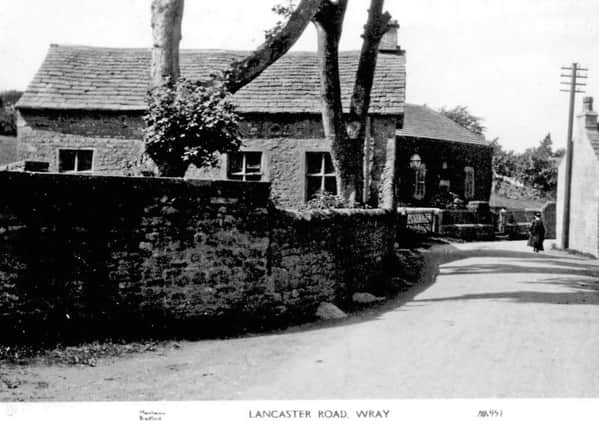Lancaster nostalgia: Wray churches, Friends' Meeting House


At the turn of the 18th Century, when the Friends’ Meeting House was first built, Wray had a large number of Quakers living both in the village and its surrounding areas. The aforementioned Lancaster Guardian article from 1889 states that:
“At one time a large number of Friends lived at Wray and in the surrounding neighbourhood. Many of the master hatters and some of their workmen were either members of the Society of Friends or attendants at the Meeting House and it was during the heyday of the hat making industry that the Religious Society of Friends was in its greatest prosperity.”
Advertisement
Hide AdAdvertisement
Hide AdThe article goes on to quote an old inhabitant of the village who “remembers that about 60 or 70 years ago there was a fair attendance at the Meeting House religious services, as there was no other place of worship in the village, most inhabitants who had any regard for Sabbath observance attended the meeting. Many persons from the surrounding district attended, especially Botton.”
However, with the removal of Wray’s hat making industry to Stockport and the official opening of Holy Trinity Church in 1841, attendance at the Meeting House’s religious gatherings began to decline. The journal of John Yeardley, a minister of the Friends who at one time lived at Bentham, states that by 1820 the Friends of Wray had dwindled down to a small number. Speaking of himself and another minister, he says: “On our way to Wray we called on Thomas Barrow at Wennington Hall where we took tea. At Wray, although there were but few Friends, there was an excellent meeting.”
Eventually, with few Quakers left in the village, Wray’s Meeting House closed its doors until approximately 1849 when a great schism or split took place in the Wesleyan Methodist Church. The separatists used the empty Friends’ Meeting House and for some time worshipped there under the name of Wesleyan Reformers. However, in 1867 the Wesleyan Reformers, who were now known as the Free Methodists, removed to their newly constructed chapel in the centre of the village.
The Friends’ Meeting House then underwent considerable repairs, after which it was re-opened for Quaker meetings. However, the whole attendance was often not more than five people and the Meeting House eventually ceased to be used as a chapel circa 1900. It was only used occasionally thereafter until 1949, when it was leased to the Methodists for £10 per year.
Advertisement
Hide AdAdvertisement
Hide AdIn 1952 the travel writer Jessica Lofthouse, in her book Lancashire’s Fair Face, visits the grounds of the Friends’ Meeting House only to find it in a dilapidated and sorry state: “I pushed open the gate of the Friends’ Meeting House burial ground, to find within a rank and neglected space with pink flowering bistort and nettles growing high over the graves of several Smiths and Wilkinsons. A sleek cat with wicked eye was lying in wait, a tiger in the jungle, for his prey; this must be a nursery for fledglings. Several cows looked over the broken wall. The chapel, austere as are all such meeting houses, suffered at the hands of war time “tenants”, everywhere was broken glass. Friends, when they meet, must now travel to Bentham, to Yealand Conyers, to Quernmore, where all is kept neat and orderly.”
In 1952 the former Friends’ Meeting House was re-opened by the Methodists for use as a Sunday school and on December 30 1958 they purchased the Friends’ Meeting House for £300. The Meeting House is used by the children of the village for Sunday school lessons and religious gatherings.